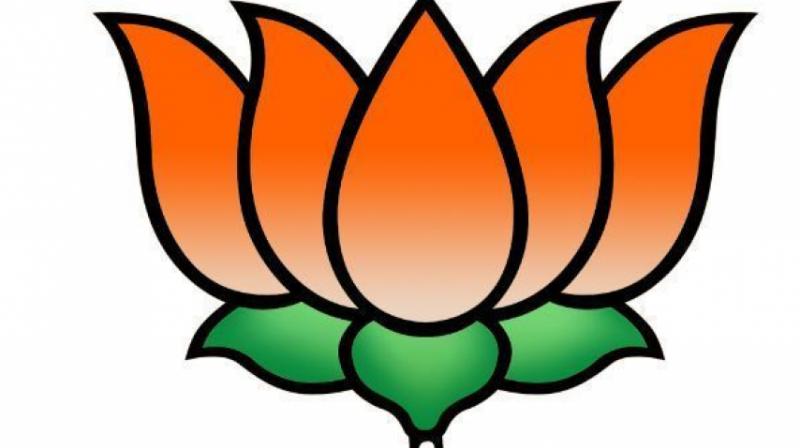Hindutva as a tool for development'

In the history of modernisation, Jeremy Bentham has a special place, along with Fourier, Loyola, Rousseau and Marx Weber. He coined a concept and elaborated a notion of governance, which, while being efficient, managerial and robustly economic, was, in fact, utilitarian, introducing a totalitarianism of a different kind from the Hobbesian contract. Hobbes evolved the idea of the Leviathan as a totalitarian figure, created to combat the anarchy of the so-called state of nature.
Bentham wished to bring order to the anarchy of the enclosure movement, where thousands of farmers, orphans and other displaced people had to be disciplined, contained, domesticated so as to be available for the industrial revolution. He provided the philosophical argument where the panopticon was not just a physical structure but a managerial attempt to create a mind-set, a mentality more conducive to factory life. A panopticon in that sense was both architectonic, a mode of organising thought and an architecture, a building that reflected that mentality. A panopticon as a building reflected theories of light and darkness. The building was flooded with light where everyone could be subject to surveillance. One of the ironies of modernity is that both surveillance as a mode of order and transparency, as a condition for freedom, operates with the metaphor of light. In the panopticon, light and dark differentiated power and control from the abjectness of scrutiny. The inspector, that site of omnipresence stands in a point of darkness while the universe around him is flooded with light to facilitate inspection.
The panopticon developed almost as a piece of fiction has become with one of the self-fulfilling prophecies of the modern era. It is the power of fictions to empower the logic of discursive realities that makes them effective. Panopticons are built on a theory of punishment where one creates a lesser evil to trigger a greater good. The panopticon creates the idea of omnipresence, a God-like quality by secularising it to the gaze. Interestingly, the idea of the all-seeing gaze goes back to Nicholas Cusa in his 1453 treatise where he visualised a painting so craftily done that the viewer from wherever he looked got the sense that the figure in the painting is looking at him.
The BJP as a modernising party is, in fact, creating the new panopticon. It emphasises the World Bank lingo of governance. It is avid about technology but what it focuses on is its majoritarian sense of control, not technology or management. These are accessories, slide shows to create an enclosure movement to discipline and modify culture. Not even Mao during the Cultural Revolution was so insidious in his attempt to transform culture. The BJP makes Orwell look silly because the new animal farm it has created has deep roots of acceptance. It caters to an India desperate for success, which is quite ready to accept authoritarianism if it speeds up aspirations.
The selfie totalitarianism of the BJP deepens both concretely and abstractly. Its idea of the panopticon is not a concrete building but a way of mapping the country into submission. It begins at two levels of control, of the body and therefore the body politic. At the level of the minds, it has to rectify history and therefore officialise and legitimise words like patriotism, security and development. They had to be exorcised of plural or confusing associations, when words march in uniform. No regime has been so preoccupied with behavioural reform, since the regime knows that in controlling memory, it can govern behaviour. A modern panopticon has to control and manage information before it can control the body. To achieve this part, the BJP has appealed to technology and management, making coercion look progressive and civilisational. One would almost think our Silicon Valley NRIs are cultural robots created by the BJP machine.
But the philistine totalitarianism of the BJP goes further. It seeks control of the attempts to define the body, state the rules of sensuality through love jihad, the imposition of prohibition, on what to eat (no beef). It links consumption to patriotism and creates a code of restrictions. It has no problem with genetic engineering or even nuclear energy, but refuses to allow beef. It is a new kind of Hindu puritanism which turns vegetarianism into the only permissible patriotism and carnivores into heretics or suspects. Food is not just about taboo. It has to convey an air of asceticism, create a veneer that appears like self-restraint but is about a deeper behavioural control. This is a regime that not only tells you what not to eat but also how much to eat. It pretends that this reform deals with waste and responsibility but when decoded, each measure spells control, suggesting that discipline by the State is inevitable if the self-discipline that the BJP wants is not possible. The BJP is clear that it is creating the new Indian self.
In the world of digitalisation, the BJP has found a secular tool to tame the informal economy, while pretending to control corruption. The first was demonetisation and the second was the Aadhaar card. When one decides that there cannot be school admissions, mid-day meals without Aadhaar cards one is using the pretence of welfare to create a securitarian State. Demonetisation was not a system to control consumption but to break the informal economy of migrants, daily wage workers, roadside dhabas, craft economies, even smaller mundis that insisted on cash. When one lists it out like the shopping list of the new governmental module, what one gets is the new panopticon, the enclosure movement for culture that Prime Minister Narendra Modi and the RSS have created.
Welcome to the new totalitarianism in the name of development in a majoritarian democracy. Mr Modi’s dream of creating an India as a soft version of the China of Mao may not be far away.

